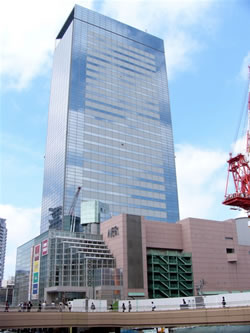(1) Location & Access

- It is located roughly 1 hour and 30 minutes by the bullet train from Tokyo and is roughly 1 hour from Narita Airport.
(2) Overview
Sendai has long developed as the central city in the Tohoku region, producing generous amounts of gold and seafood. Today, it is positioned as the central city for the economy, politics and education in the Tohoku region. A number of corporations have set up branches and local offices in Sendai. Due to the abundant greenery in the central part of the city, it is referred to as the "City of Trees."

It was connected to Tokyo by an expressway in 1975 and the Tohoku Bullet Train started operating between Omiya and Morioka Stations in 1982. The improved traffic network strengthened the position of Sendai as a local base in the Tohoku region, reducing the time it took to reach Tokyo. The ratio of young people is slightly higher in Sendai than the national average. The percentage of the population over 65 years of age is 15.8%, which is below the 21.0% national average. The population growth rate of 1.7% (2005/2000 Census) is, however, slightly lower than other government-ordinance-designated cities. Although the economy of Sendai was in recession and saw the closing or downsizing of local branches in recent years, it has gradually recovered of late.
Several plans for the construction of new office buildings, which were held back until around 2006, have been underway since 2007. Along with the trend for the relocation and expansion of corporate offices, the supply-demand balance for office space has been improving since 2004. However, due to the increased supply of office space since the latter half of 2007, the vacancy rate seems to be staying up. As a large number of office buildings are planned for completion in 2008 and other large-scale development projects are to follow soon after, changes in the balance of supply and demand are expected.

AER
The central district of Sendai sprawls to the west of Sendai Station and has a concentration of office buildings and commercial facilities. Aoba-dori and Hirose-dori Streets running east to west are the main streets in the area. The Kotodai area is the government office district, in which the prefectural government office and the city office are situated and lies to the north of the two streets. The Minamimachi-dori area, in which a number of older buildings are located, lies to the south of the two streets. The east exit side of Sendai Station, where development was falling behind, is now seeing new buildings being constructed as the land readjustment project finished in 1993. There is a plan to build a sub-city center near JR Nagamachi Station, which is located roughly 5 km south of JR Sendai Station and development projects have been underway over a long period. The core area is named "Asuto Nagamachi" and its traffic infrastructure was further improved by the opening of a new JR station and a new road.
The construction of a municipal subway line, the Tozai (east-west) line, is currently underway following the Nanboku (south-north) line. Its opening is planned for 2015. The new line will intersect the JR lines and the Nanboku subway line, connecting residential areas on the eastern side of the JR lines, a distribution business district and the Tohoku University campus. Sendai aims at enabling "movement between homes located in the urbanization-designated areas and the city center or major hubs within 30 minutes using public transportation."
(3) Profile Data
1. Major office buildings: year completed, major owner
AER: March 1998, Secured Capital Japan
Kakyoin Square: 1999 Mitsubishi Estate
2. Major companies headquartered in Sendai City
Tohoku-Electric Power, 77 Bank



